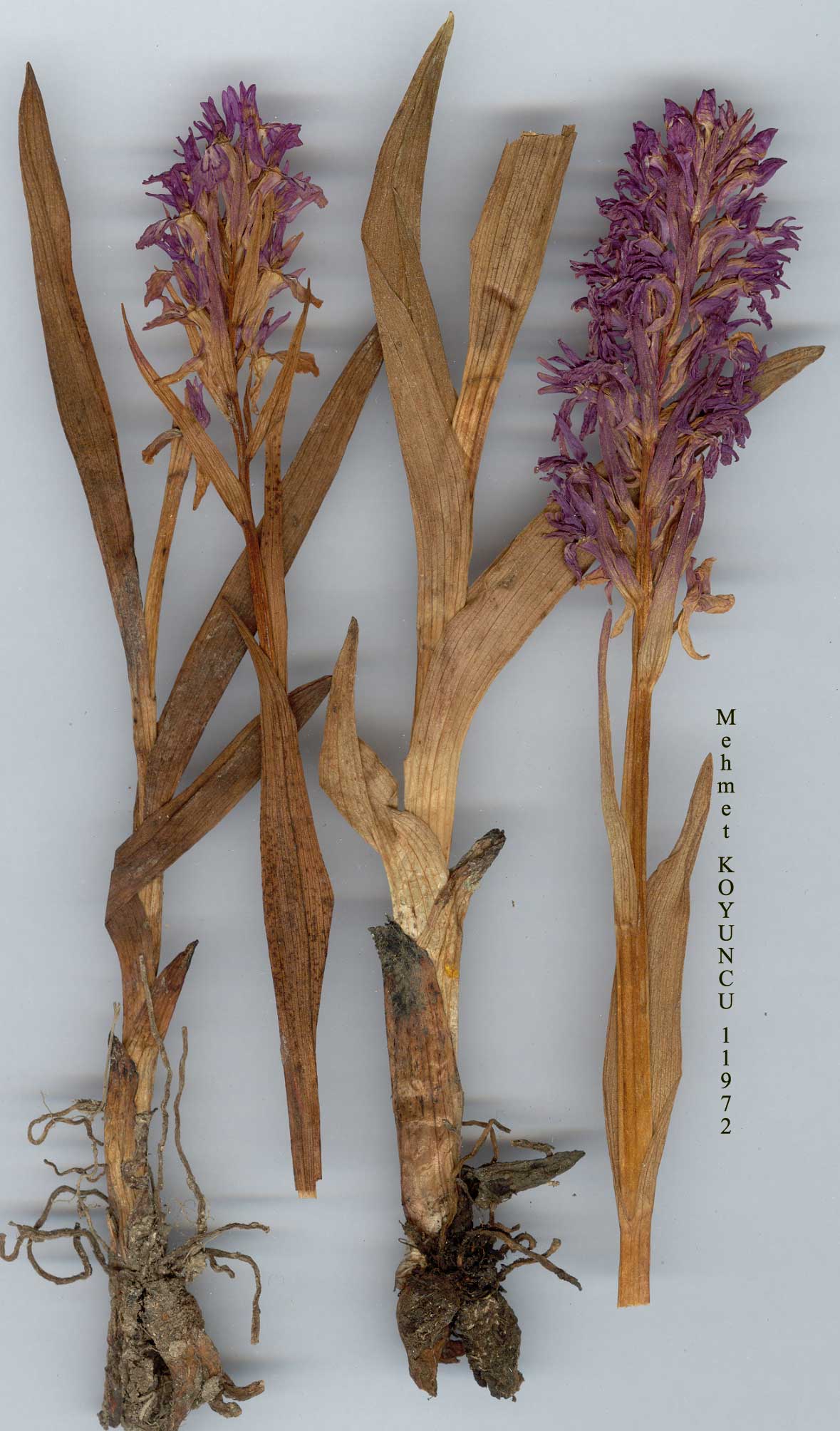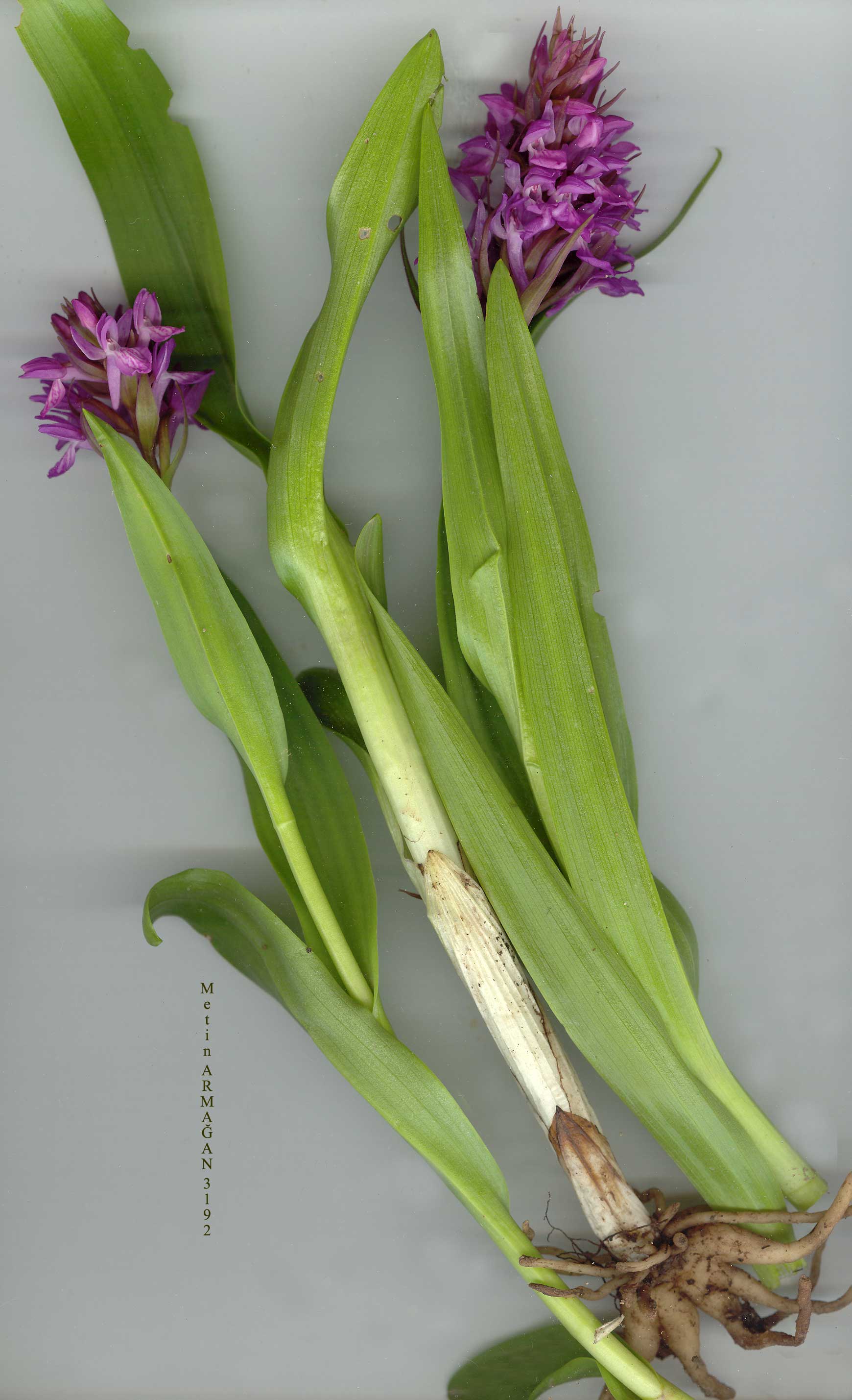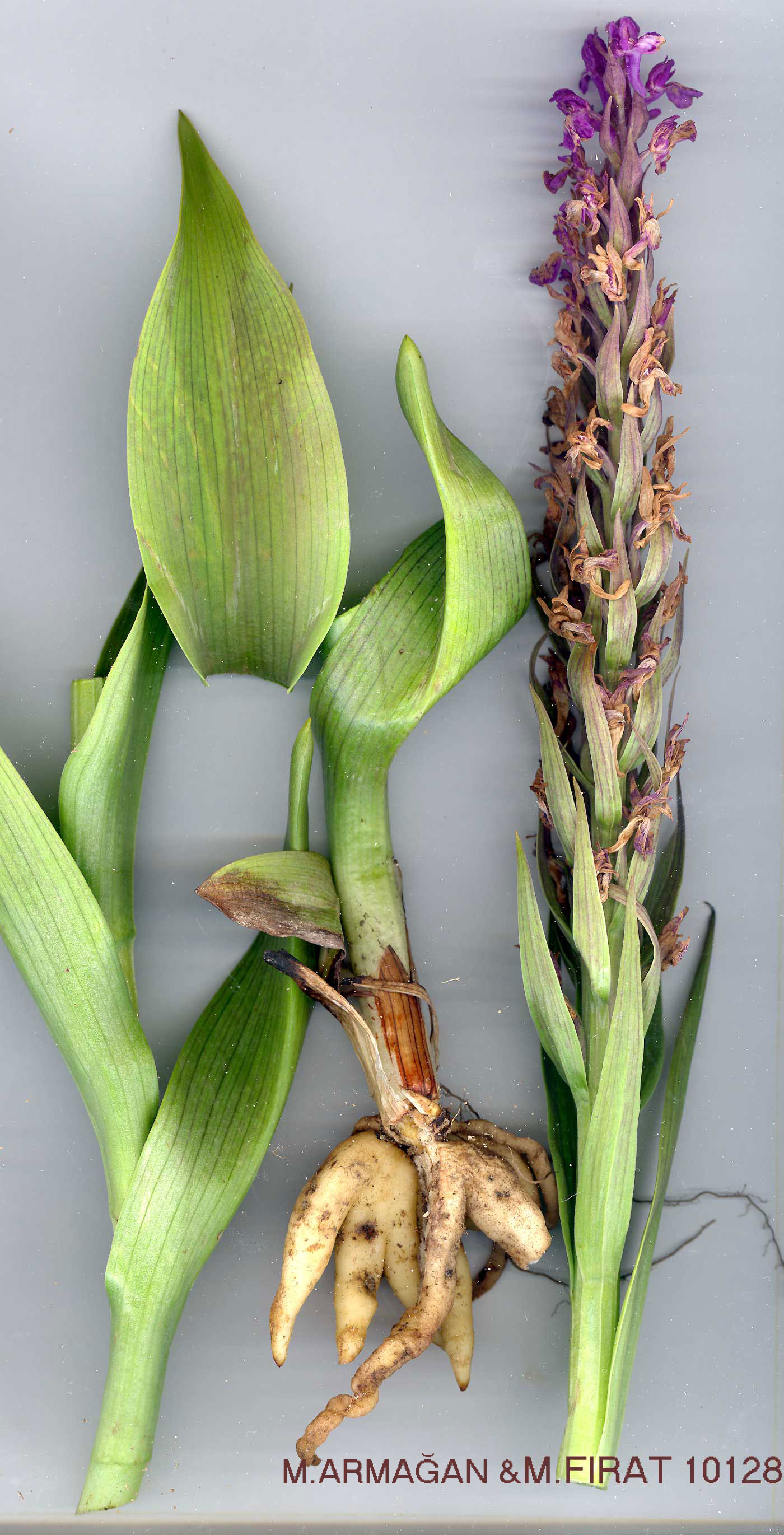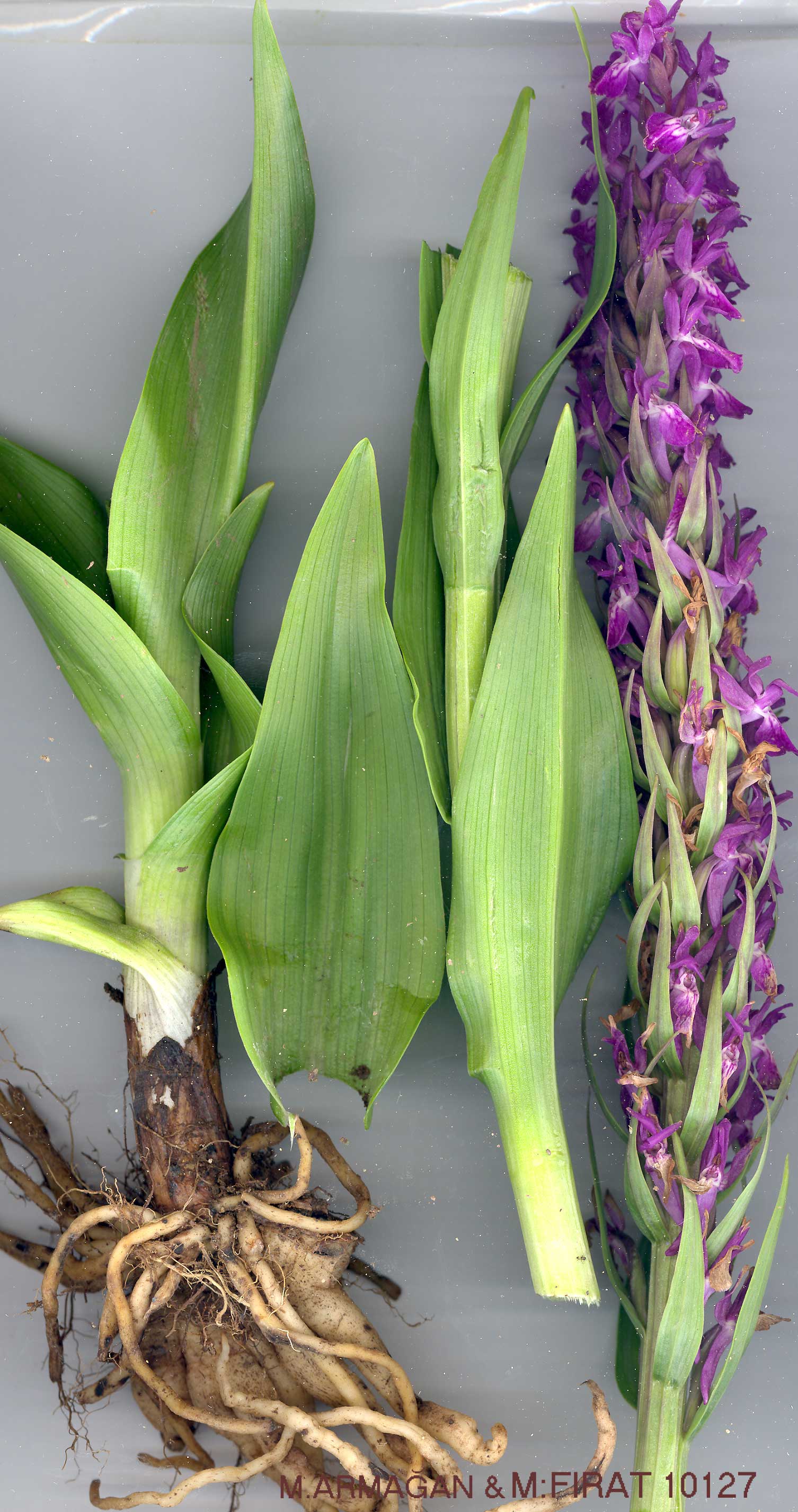| Orchidaceae |
|---|
Dactylorhiza NECKER EX NEVSKI |
| D. umbrosa (Kar. & Kir.) Nevski in Trudy Bot. Inst. Akad, Nauk ser. 1, 4:332 (1937). Syn: Orchis umbrosa Kar. & Kir. in Bull. Soc. Nat. Mosc. 15:504 (1842)! O. inazrnata auct. non L. (1755); O. orienîalis K1. subsp. turcestanica Kl. in Acta Horti Petrop. 17(1):I83 (I898); O. incarnala L. var. longifolia Freyn & var. stenophylla Freyn in Bull. Herb. Boiss. ser. 2, 1:285 (1901); O. persica Schlechter in Feddes Rep. 15:290 (1919); Dactylorchis umbrosa (Kar. & Kir.) Wendelbo in Nytt. Mag.Bot. 1:24(1952)! Dactylorhiza persica (Schlechter) So6, Nora. Nov. Gen.Dactylorhiza, Budapest 4(1962); D. incarnata (L.) So6 subsp. turcestanica (Kl.) Sunderm., Europ. Medit. Orchid, ed. 3:40(1980). Ic: Fl. Tadzhik. SSR 2: t. 72 (1963); Renz in Rech. fil., Fl. Iranica 126: t. 50-52, 70, 71 (1978). Map 101. Plants variable in size, dwarf to 80 cm. Stem solid, hollow in larger plants. Leaves evenly distributed or sometimes crowded near base, 4-6(-9), oblong-ovate to broadly lanceolate or lanceolate. Spike densely cylindrical, to 15(-22) cm. Lower bracts exceeding the rose-purple, rarely white flowers. Sepals and petals oblong-lanceolate, to 12(-16) mm; lateral sepals spreading orreflexed; petals shorter. Labellum nearly flat, usually longer than broad, roundish, sometimes with tapering apex, entire or subentirs, rarely ± 3-lobed, 7-10(-13) x (4-)7-10(-13) mm, with darker dots and loops of broken lines. Spur deflexed, cylindrical, ± curved outwards, ± as long as ovary. FL 6-7(-8), Marshes, moist alpine meadows, nr springs, Salix or Tamarix scrub nr streams, 1500-3300 m. Type: [USSR] Kazakhstania (Songaria): in salicetis umbrosis insularum fl. Lapsa, Karelin & Kiriloff (holo. LE!). E. & S.E. Anatolia. A8 Erzurum: Erzurum to Ispir,nr Çortinkar, 1900-2000 m, Renz 9275! A9 Kars: Karaurgan to Sarikaniş, Yağmurlu Da., 2200 m, D. 29469! foruh: Ardahan to Şavşat, W. of pass, 1350 m, Renz &Taub. 12139! Erzurum: Yeşildere, Erzurum to Artvin, 2000 m, Renz & Taub. 12101! B8 Bingöl: Karlıova, 1750 m, Taub. 81.161! Erzincan: pass between Tercan and Aşkale, 2000 m, Renz & Taub.! B9 Ağri: 3 km E. of Taşliçay, 1700 m, D. 43537! Bitlis: Sarhaç, S. of Van G., 1850 m, Renz 6527! Van: S.E. of Çuh pass, Hoşap to Başkale, 2350-2750 m, Hub.-Mor. 11315! B9 Van: Kırkgeçit, 2150 m, Taub. 81.260! B10 Van: 37 km N.E. of Çaldiran, 2600 m, Sorger 81-15-10! C9 Van: 20.5 km S. of Kırkgeçit, 2400 m, Taub. 81.261! Hakkari: Diz De., 26 km E.N.E. of Hakkari, 1850 m, Watson et al. 2857! C10 Hakkari: 12 km W. of Yüksekova, 1900 m, Renz & E. Sezik 12974! N.E. Iraq, Iran, Afghanistan, C. Asia, Ir .-Tur. element. The Turkish material shows the full range of variability characteristic of populations from the eastern part of the area of the species. Examples of extreme forms include a veryrobust plant with densely leafy stems and elongate bracts, described as var. longibracteata Renz (op. cit. 153,1978) from B9 Bitlis (S. of Ahlat, 1720 m, D. 43341!) and a dwarf plant with some leaves crowded near the base (C10 Hakkari: Kara Da., 3300 m, D. 24444!). The latter gathering is similar to forms from the mountains of Iran and Afghanistan. The plants from N.E. Anatolia (A8 and A9) are not as typical; the flowers are usually smaller, the labeEum sometimes roundish-subentire and the spur occasionally shortened, sometimes even reduced in an abnormal way. There is a tendency to approach D. osmanica, which is characterised by a short, more conical spur. Further investigations are needed to determine whether some gatherings from this area (e.g. Renz &Taub. 12139 and 12101) might be better treated as separate entities. |
 NEVSKI _jpg.jpg)
 NEVSKI _jpg.jpg)
 NEVSKI _jpg.jpg)



